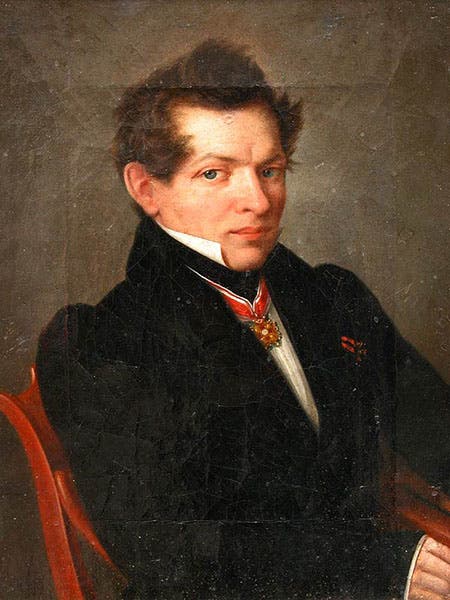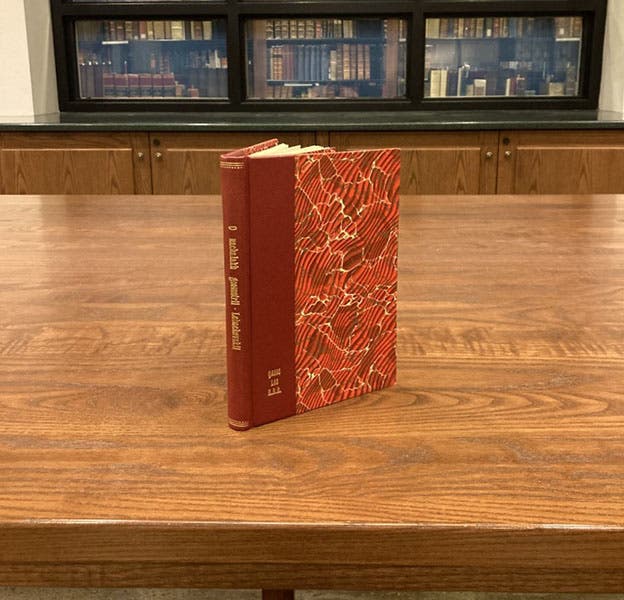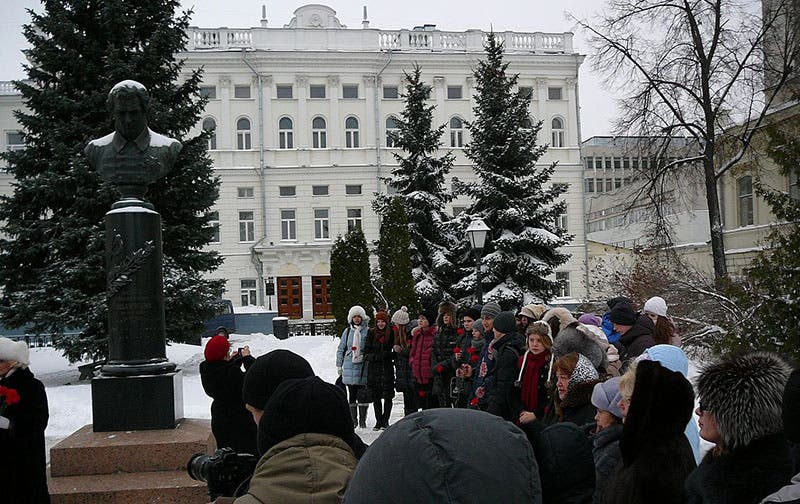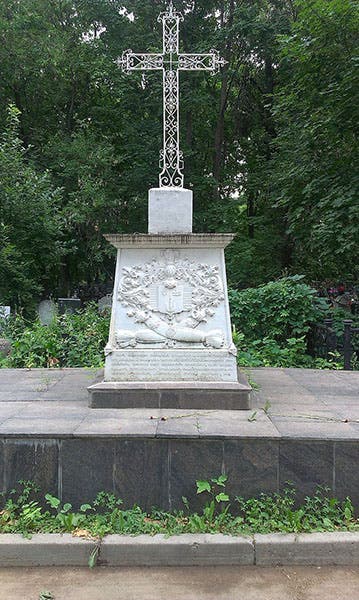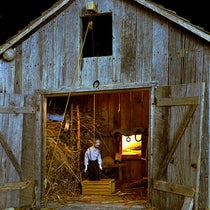Scientist of the Day - Nikolai Ivanovich Lobachevsky
Nikolai Ivanovich Lobachevsky, a Russian mathematician, was born Dec. 1, 1792. In 1829 and 1830, Lobachevsky published a series of five papers, which are collectively titled O nachalakh geometrii (On the Principles of Geometry). The papers appeared in a journal published by what was then Kazan Imperial University, in Tatarstan in European Russia. In his papers, Lobachevsky argued that since the fifth postulate of Euclid's Elements, the so-called parallel postulate, is just that – a postulate – it should be logically possible to replace it with a different postulate and construct an entirely consistent geometry, but one different from Euclidean geometry. So Lobachevsky postulated that given a line, and a point not on that line, it is possible to draw more than one line through the point that is parallel to the given line. (Euclid's postulate said that one and only one parallel line could be drawn through such a point). With his new postulate, Lobachevsky constructed a geometry that describes a curved space that is saddle-shaped, or, as mathematicians call it, hyperbolic.
Lobachevsky’s paper aroused little attention until the next century, when Albert Einstein demonstrated, in his general relativity paper of 1916, that space is curved, and then Lobachevsky was suddenly hailed as the father of non-Euclidean geometry, the very geometry needed to describe relativistic space. A complete set of Lobachevsky’s five-part paper is extremely scarce. Back in 1969, the Linda Hall Library, which through its Exchange program had built up considerable good will in Soviet Russia, requested that the Kazan State University Library make a photocopy of its set of Lobachevsky papers, and the copy was presented in 1970 to Thomas Gillies, then Associate Director of our Library. For some years, this photocopy was the only copy of Lobachevsky's work in the entire Western world. That is no longer the case, but it is still a very rare item. We show our bound photocopy below. I use the more common spelling Lobachevsky in this post, but should you seek his work in the Library catalog, you will have to look under Lobachevskiĭ.
There is a portrait of Lobachevsky in the Tatar Museum in Kazan, where he taught and was rector for most of his life (second image, above). The square in front of the main building of what is now Kazan Federal University is called Lobachevsky Square, and it contains a bust of our mathematician (first image). Every year, on Dec. 1, the members of the Volga Mathematical Olympiad gather around the bust to sing happy birthday to Nikolai (fourth image, below). The university in Nizhny Novgorod, where Lobachevsky was born, has been renamed Lobachevsky State University of Nizhny Novgorod. One would think there would be a statue or bust of Lobachevsky somewhere on the university grounds, but if such exists, I have been unable to locate a photograph.
To my generation, Lobachevsky is best known for being the subject of an irreverent Tom Lehrer satirical song, which was issued on the first Lehrer album in 1953, and which you can listen to via YouTube. This video is not really a video but an audio file with one still image. The song recommends plagiarism as the surest way to advance in the competitive world of mathematics. It is not meant to impugn the accomplishments of Lobachevsky – Lehrer, a mathematician himself, claimed that he chose Lobachevsky simply because he liked the sing-song nature of his full name. You will see what he meant once you listen to the tune. I guarantee that for the next hour, you will be regularly singing to yourself: “Nikolai Ivanovich Lobachevsky is his name. Hey!” There is no true video that I can find of Lehrer performing “Lobachevsky” live (Lehrer ceased public appearances in 1974), so if you want to actually see Lehrer sing one of his songs, you should check out the links at our Scientist of the Day post on Lehrer, which we put up in 2018.
Lobachevsky died in 1856 and was buried in Arskoe Cemetery in Kazan. His grave is a destination point for touring mathematicians.
Dr. William B. Ashworth, Jr., Consultant for the History of Science, Linda Hall Library and Associate Professor emeritus, Department of History, University of Missouri-Kansas City. Comments or corrections are welcome; please direct to ashworthw@umkc.edu.


